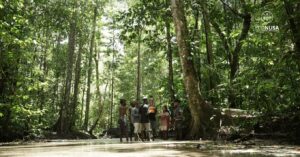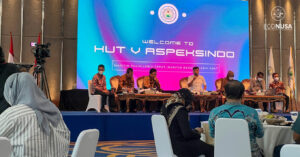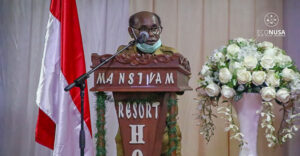
Although invisible, Ozone (O3) plays an important role in protecting Earth’s creatures from ultraviolet B (UV-B) rays. The reason is excessive exposure to ultraviolet B has an impact that cannot be underestimated.
For humans, some of these effects are skin cancer, cataracts, and decreased immune system. As for the marine ecosystem, the balance of the food chain is disrupted. Phytoplankton which is the basis of the food chain become endangered. In addition, ultraviolet light slows down plant growth which will also affect the food chain and ecosystems on land.
Ozone depletion was initially known through research in Antarctica in the mid 1980s. Then, Susan Solomon, an American researcher, found that ozone was damaged by the choline and bromine produced by chlorofluorocarbons (CFCs). Besides CFCs, other ozone depleting substances (BPO) are Halon, carbon tetrachloride, Methyl Chloroform, HCFC, Methyl Bromide, Bromochloromethane, Hydrobromofluorocarbon.
A variety of BPO substances are widely used in daily life. CFCs and HCFCs are used as a development material in the process of making foam and insulation panels, as a coolant, and as a booster in a spray tube. Methyl chloroform and carbon tetrachloride are used as solvents and cleaners. As an effective material to extinguish fires, Halon is used to extinguish fires. Methyl bromide can be found in pesticides.
Recognizing the importance of preserving the ozone layer, 24 countries agreed to move together through the Vienna Convention on the Protection of the Ozone Layer and to be followed up with the Montreal Protocol in September 1987. The treaty regulates the supervision of the production, consumption and trade of BPO. Indonesia took part after ratifying the treaty through Presidential Decree number 23 of 1992.
Ozone recovery efforts are bearing fruit. Measurement of the ozone layer in Antarctica in September 2017, showed the smallest ozone hole since 1988. The size of the hole reached 19.7 square kilometers, equivalent to two and a half times the United States. That happened thanks to the warm temperatures of Antarctica.
Unfortunately, similar conditions do not occur at the equator with the strengthening of the incoming ultraviolet B rays. The results of studies that record atmospheric conditions for 30 years have been published in the journal Atmospheric Chemistry and Physics. The researchers do not yet know with certainty the cause of the ozone layer insertion. It is suspected that industrial paint chemicals, aerosol sprays, and climate change also play a role.
The results of the publication in the journal Nature in May 2018 cannot be underestimated. The existence of CFC-11 has continued to increase in the atmosphere over the past few years. There is no agreement on who is responsible for the CFC increase.
In the moment of 2018 International Ozone Conservation Day which falls on Sunday (09/16/2018), we can participate in protecting the ozone layer. The way is easy. The United Nations Environment Program (UNEP) mentions several things we can do, including using products labeled “ozone friendly” or “HCFC Free”. If possible, turn off the air conditioner at night.
Source:
https://www.bbc.com/indonesia/majalah/2016/07/160701_majalah_lubang_ozon
https://www.wwf.or.id/?41843/Melindungi-Ozon-Melalui-Green-Lifestyle
http://ozone.unep.org/ozone-and-you#the-solution-
http://www.menlh.go.id/mengapa-kita-perlu-melindungi-lapisan-ozon/
https://sains.kompas.com/read/2018/06/30/170800823/sudah-diilegalkan-sejak-1987-kok-cfc-muncul-lagi-




